





Sales funnel automation maximizes conversion rates and customer acquisitions. Follow these 8 steps using the right software.
By the way, we’re Bardeen; we build an AI copilot for repetitive GTM tasks.
If you’re into automation, you’ll love our AI agent for sales. Put prospecting, lead gen, outreach, and more on autopilot.
Automating your sales funnel can help you identify customers, capture leads, nurture prospects, and close deals more efficiently. In this comprehensive guide, we'll walk you through eight simple steps to build an automated sales funnel using the latest AI solutions, such as sales prospecting tools and matching strategies.
A sales funnel is a visual representation of the journey a customer undertakes when making a purchase with your business. The sales funnel is the concept that companies must guide customers down a path and “funnel” them toward closing a deal.
Sales funnel automation is the idea that companies can make these processes automatic with only the essential manual input from their sales reps. By automatically managing things like lead generation and follow-ups, typically using AI sales tools, businesses can create an automated sales funnel.
Funnel marketing automation helps companies save time and allows sales agents to focus on more critical aspects of selling, such as negotiation tactics. Creating an automated sales funnel is a no-brainer for companies looking to cut down on wasted interactions and increase conversion rates.
Want to know why everyone’s raving about sales funnel automation? The simple truth is that it brings numerous notable benefits to your company, including:
The big USP of creating automated funnels is efficiency. You’ll save masses of time by making tedious and time-consuming processes like data management automatic, leaving your sales reps to focus on the much-needed human touch.
Then there are the cost savings. Many sales funnel automation tools are free or offer plans that suit smaller budgets and businesses. You’ll likely earn back any costs incurred by buying, for example, sales lead management software, thanks to increased efficiency, higher-value leads, more conversions, and a better brand reputation.
Establishing an automated sales funnel means creating consistency across your revenue operations (RevOps), sales, and marketing teams. Emails have the same templates, leads are contacted at similar times, and everything is done following a strict set of processes and timings for increased consistency across the board.
Automating your outreach and follow-ups ensures no lead is missed and every prospect is answered. You can improve your real-time communication and close deals faster.
Using automated processes, you can organize your sales funnel data to facilitate lead management automation. You can segment and qualify leads with AI tools, ensuring you create hyper-targeted and ultra-personalized cold emails and messages that improve conversion rates.
Even in the end stages of the sales funnel, automated tools are exceedingly useful. They can give you real-time insights into lead and customer behavior, thanks to robust analytics and monitoring features. You’ll be able to analyze your sales strategies and identify areas for improvement. Plus, you’ll be able to make data-driven decisions more confidently.
The use of AI tools to automate your sales funnel means you can scale your operations up or down quickly as needed, simply by adjusting your paid plan or adding/removing additional tools.
Want to get started on automating your sales funnel? Try this workflow to draft a follow-up email using personalized data that you can quickly use to nurture your leads:



How does this playbook work?
Tracking action items from meetings and composing follow-up emails is time-consuming. This playbook extracts action items from any webpage, then uses them to draft a follow-up email in Gmail, ready to send.
The goal of a sales funnel is to direct customers on a buying journey. This means there are several stages they must pass through on their way from a line in a prospect list to closing a sales deal with your company.
But before the sales funnel even begins, there’s the marketing funnel. These are very similar, except you should think of the marketing funnel as the legwork to the sales funnel.
During marketing funnel automation, your team typically implements strategies to hook potential customers. This could involve publishing blogs and guides, utilizing targeted ads, jumping on social media trends, or anything that generates interest in your company.
The end goal of automated marketing funnels is to turn a casual browser into an engaged customer. Once that curiosity is piqued, the sales funnel takes over.
The typical stages of a sales funnel are below:

The sales funnel guides customers through a series of interactions with your business, from initial contact to nurturing their interest and ultimately finalizing the sale.
Bardeen can help you with sales process automation, including LinkedIn scraping that you can use to enrich your leads. You can also use pre-built playbooks to craft personalized emails for your leads. Check out these simple solutions below:

How does this playbook work?
Need to quickly pull data from a LinkedIn profile? This playbook scrapes key information from the active LinkedIn profile tab, giving you structured data in seconds.




How does this playbook work?
Want to know how to build automated funnels for sales? Just follow these 8 simple steps:
Who are you going to target? Who do you want to sell to? Understand the needs and characteristics of your target market as the first step to creating an automated sales funnel.
The right lead generation software will help you optimize your business efficiently. Consider factors like features, integrations, cost, customer support, and scalability when comparing automation tools.
Begin automating the early stages of lead generation and capture to engage prospects and start them on the first stage of the funnel. This will create a smooth transition from the marketing funnel and ensure you gather all the necessary enriched data in one place.
Now you can sort your data, qualify and score leads, and segment potential prospects by industry, age, company size, previous interactions, or another demographic.
With your leads identified and sorted, you can now create the content for every stage of the automated sales funnel. You can use an AI message generator to streamline content creation and then complement this with personalization, all by using tools like Bardeen.
Implement techniques to direct your customers to the right transactions. Add pop-ups and calls-to-action to make purchases more attractive and increase conversion rates. If you prefer to do these manually, automating the other steps in the sales funnel will save you plenty of time to focus on this step.
Once you’ve generated your leads, collated the data, scored and qualified leads, created content, and streamlined deals, you must ensure you constantly monitor and analyze your processes. This will help you identify bottlenecks or areas where automation can be increased for better results.
Lastly, you’ve compiled your sales funnel, you’ve run the automations, you’ve engaged and interacted with the leads, and you’ve (hopefully) closed some deals. You must now use the insights you gained to train your team on how to optimize their funnel workflows.
We’ll discuss these steps in more detail throughout this article. For now, though, take a look at some real-world examples of automated sales funnels to help you understand them more clearly.
Automated funnels for sales can take many forms, but the core concept remains the same: lead customers on a journey that sees them increasingly interested in your product until they buy it.
For example, imagine your E-commerce online store is looking to sell the new products you’ve got in stock. Your shop hasn’t sold these products before, so you must generate interest and promote them to increase their sales.
Here’s what your automated sales funnel could look like:
Stage 1: Use social media and influencer marketing to showcase your new products before they officially go on sale.
Stage 2: Interest followers are directed to a landing page, where they sign up for a mailing list using a few personal details.
Stage 3: In the lead-up to your product launch, send emails to generate buzz among those who signed up. You can also use their personal details to recommend other products you know they’d be interested in.
Stage 4: Streamline conversions by sending exclusive discount codes or promotions for when your product becomes available in the store.
Stage 5: Launch the product and sell! Remember to follow up with gratitude and suggestions for further purchases.
Along the way, you can use automations to help you streamline your sales funnel. For instance, you can use Bardeen to draft an email with our OpenAI email writer:


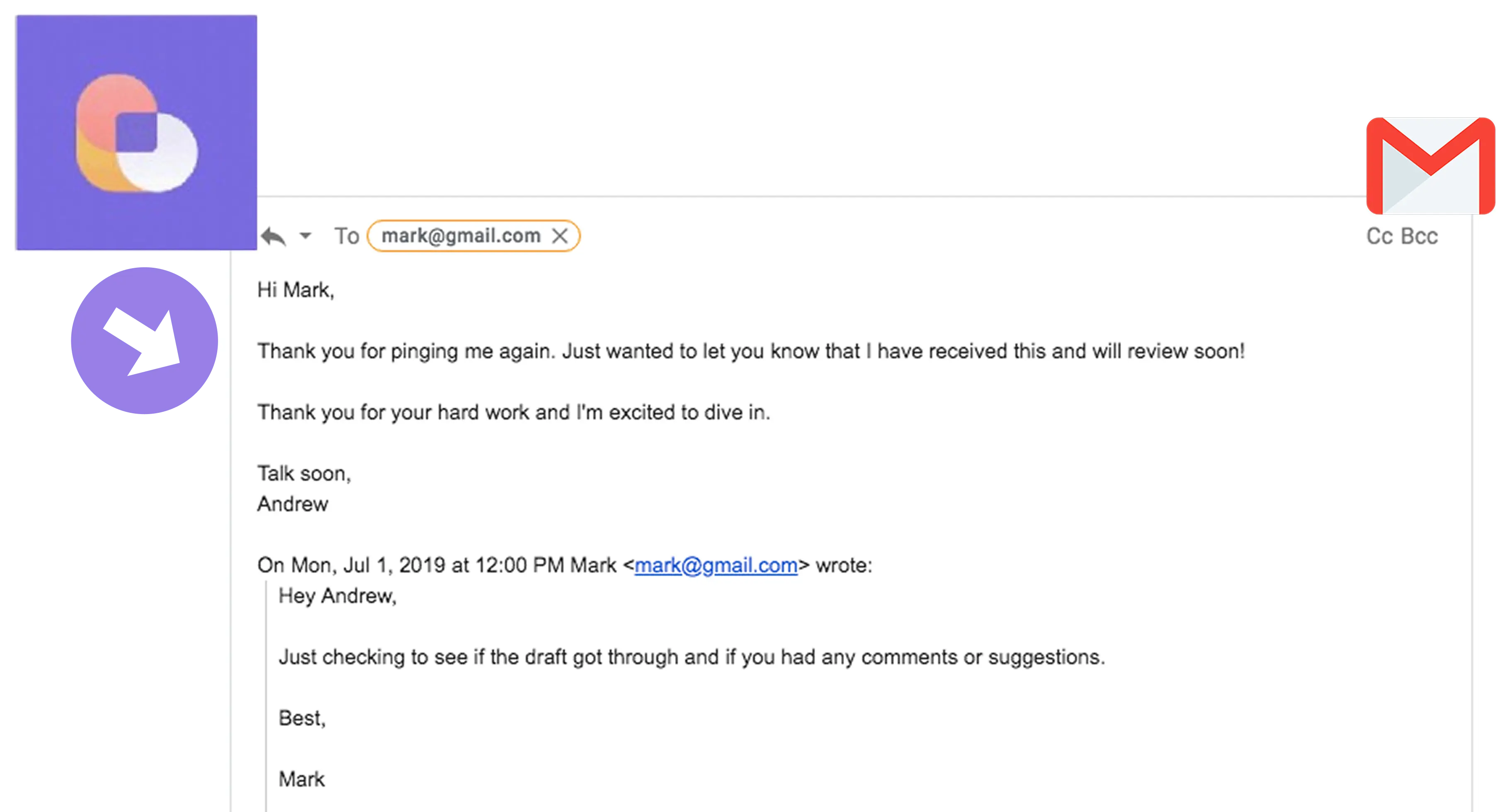
How does this playbook work?
Writing effective emails is time-consuming. This playbook uses AI to generate a personalized email draft with one click, saving time while ensuring quality.
Now you know the basics of automated sales funnels, including their benefits and how to build one, we’d like to talk more about the different steps and offer helpful insights to refine and optimize your sales funnel automation.
The first step to creating an automated sales funnel is to know your target market. Identifying your target audience will help you understand who your ideal customers are. Then, you can tailor your marketing strategies to their specific needs and preferences.
Here are the three initial steps you should take to identify and understand your audience:
Gather data on potential customers through market research and analytics tools. Your sales intelligence strategy may include collecting demographic information, interests, pain points, purchase history, and online behaviors.

How does this playbook work?
Gathering data from Reddit posts for research is time-consuming. This playbook extracts key information from the active Reddit post page with a single click, making data collection effortless.
Create buyer personas based on the data you've collected. These fictional representations of your ideal customers help you visualize and empathize with their needs and motivations.



How does this playbook work?
Understanding customers is key for product and marketing, but analyzing data is time-consuming. This playbook generates a detailed buyer persona report in a new Google Doc by analyzing a Google Sheet with customer data using AI.
Organize your data and segment your audience into distinct groups based on shared characteristics, such as age, gender, location, or purchasing habits. This allows you to create targeted marketing messages that resonate with each segment.

How does this playbook work?
Exporting Salesforce contacts to Google Sheets is a slow, manual process. This playbook connects Salesforce and Google Sheets, copying all your contacts to a spreadsheet with a single click.
By investing time in identifying and understanding your target audience, you can create a sales funnel that effectively guides them through the customer journey and ultimately drives conversions. Consider using prospect list building tools to streamline this process.
Selecting the best sales funnel software for your business is crucial for optimizing your sales process and maximizing conversions. But how do you ensure you choose the right one?
Here are some key factors to consider when browsing sales funnel tools:
Look for software that offers a comprehensive set of features, such as landing page builder, email marketing, automation, and analytics.
Choose a platform with an intuitive interface and drag-and-drop functionality to create and manage your funnels efficiently.
Ensure the software integrates seamlessly with your tools, such as CRM, payment gateways, and webinar platforms. For instance, Bardeen offers hundreds of integrations with popular sales platforms like HubSpot and Salesforce.
Consider a solution that can grow with your business, accommodating increased traffic and complex funnel structures.
Opt for a provider that offers reliable customer support to help you navigate any challenges and optimize your funnels.
Bardeen automates tasks to save you time. Use Bardeen's sales prospecting automation to make your sales process faster and more efficient.
Dedicated sales funnel software can be a big boost for your business. There’s a wide market of tools out there that each offer varying features and plans. Some of the top sales funnel automation tools include:
GetResponse is an all-in-one marketing platform designed for small businesses, solopreneurs, and creators. It offers tools for email marketing, automation, landing pages, and even course creation, making it a flexible option for building and managing sales funnels.

GetResponse holds a 4.3 out of 5 rating on G2, with users highlighting its ease of use, automation features, and responsive support. Many reviewers mention that it's well-suited for small to mid-sized teams and solo marketers. Some note that while the platform is powerful, certain features could be more intuitive.
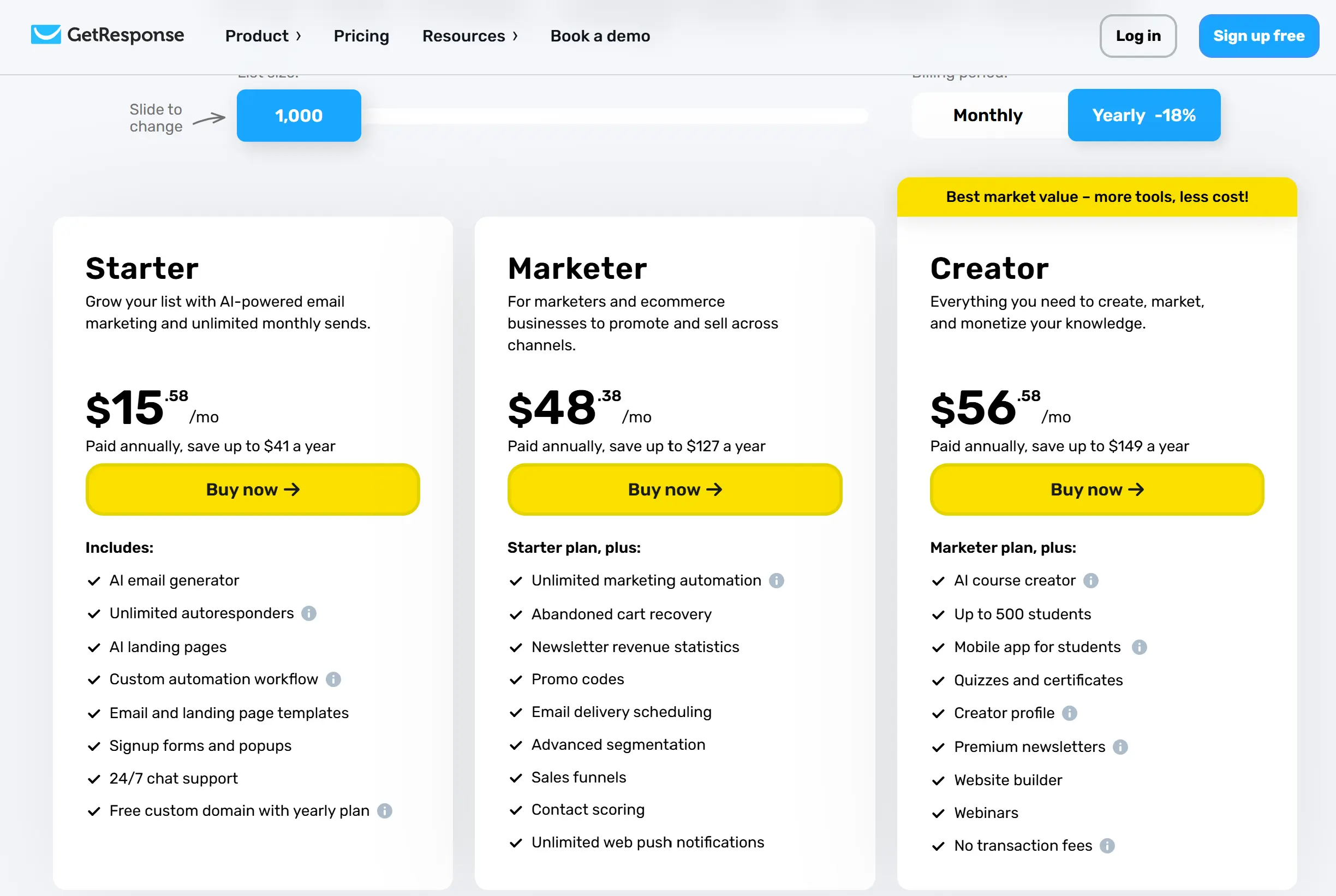

ClickFunnels is a web-based platform designed to help users build and manage sales funnels without needing technical or design skills. It offers a drag-and-drop editor, pre-built templates, and a suite of tools for landing pages, email automation, checkout flows, and more. The platform is often used by small businesses and entrepreneurs to guide leads through a structured sales process.
ClickFunnels has a 4.6 out of 5 rating from over 400 reviews on G2. Users often highlight its ease of use and the ability to build complete funnels quickly. Many appreciate the all-in-one nature of the platform, especially for small businesses. However, some reviews mention concerns about pricing, bugs, and the platform’s complexity for beginners.
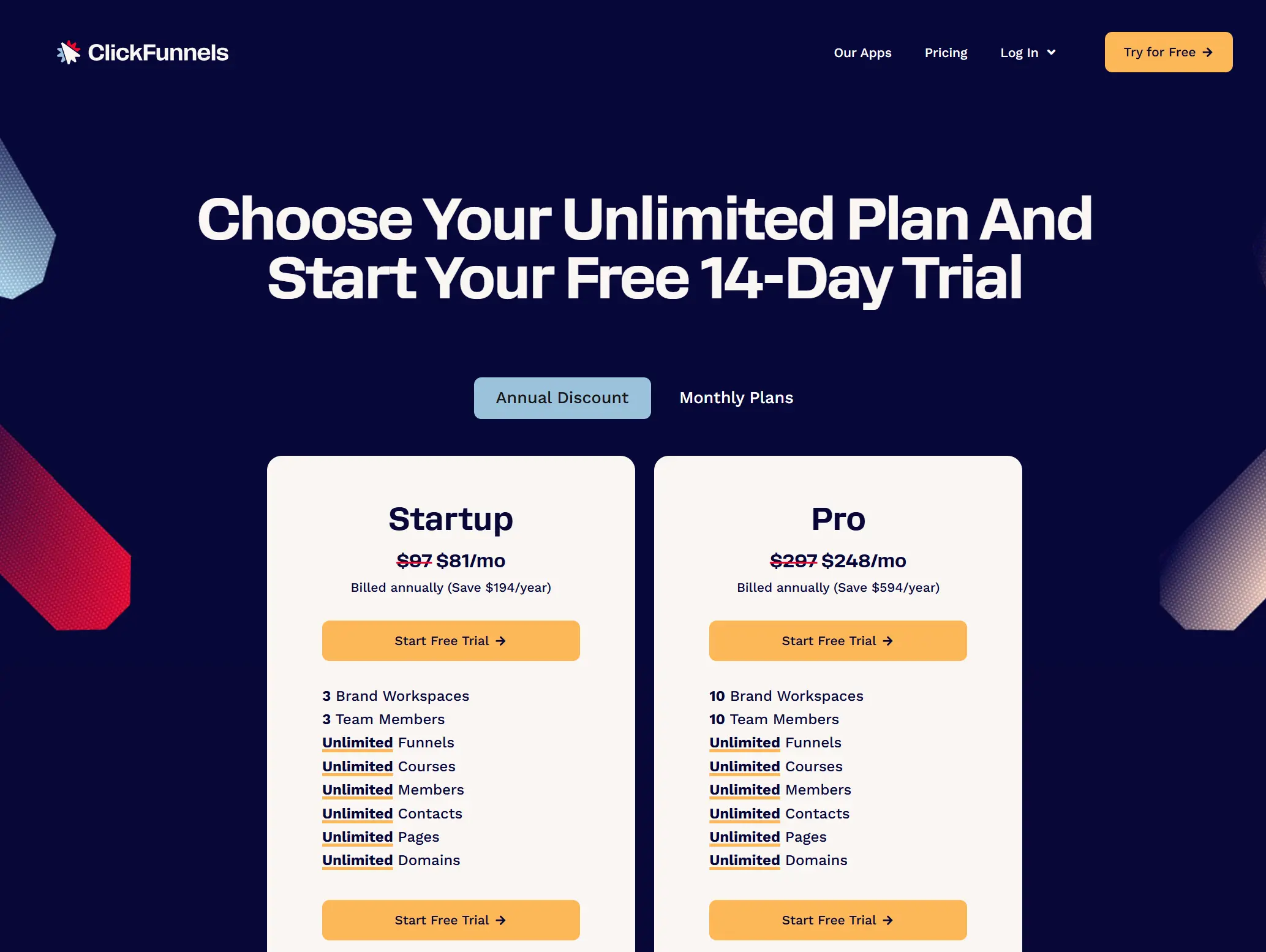
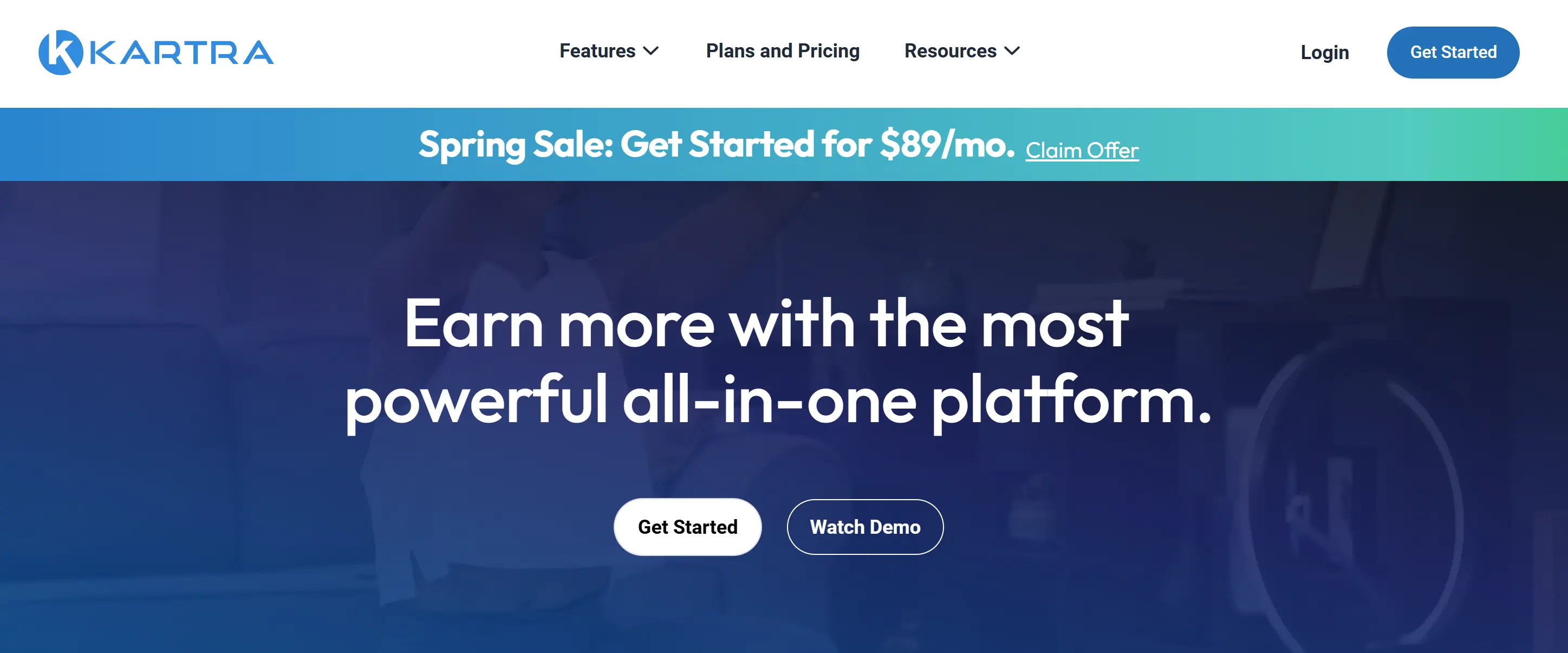
Kartra is an all-in-one platform designed for creators, coaches, and small businesses to manage and grow their online presence. It combines tools for email marketing, landing pages, membership sites, e-commerce, and automation into a single system. This makes it useful for building and managing sales funnels without needing multiple tools.
Kartra has a 3.9 out of 5 rating on G2 based on 50+ reviews. Users like the all-in-one nature of the platform and its ability to centralize business operations. Many highlight the time and cost savings from not needing multiple tools. However, some users mention issues with customization, bugs in the page builder, and limitations with third-party cookie handling.
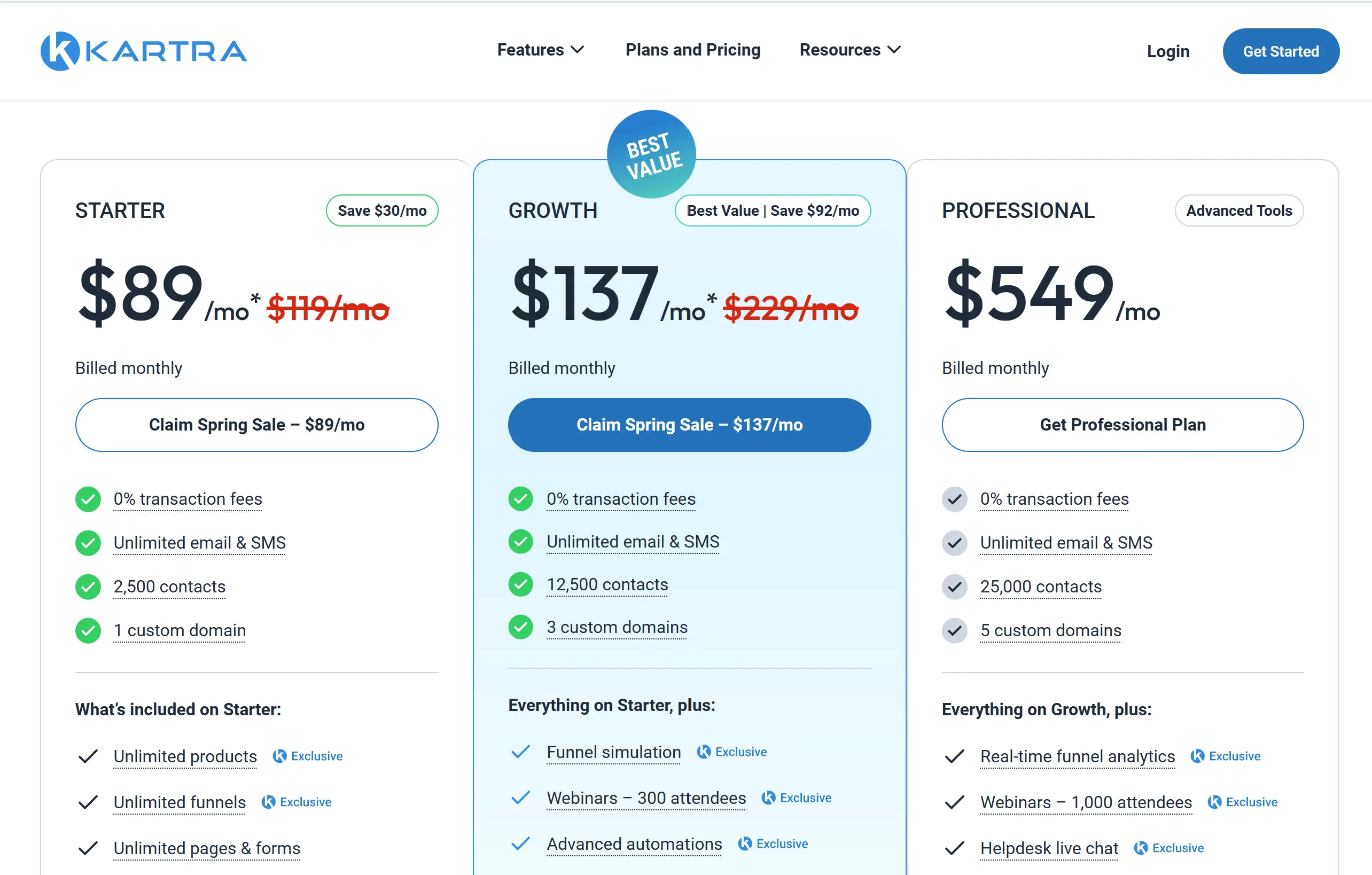
Kartra is best suited for small businesses and solopreneurs looking for a centralized platform to manage their sales funnels, marketing, and digital products.
Systeme.io is an all-in-one marketing platform designed for entrepreneurs and small businesses looking to manage sales funnels, email marketing, online courses, and websites from a single dashboard. It’s especially popular among users who want a simple, affordable alternative to tools like Kajabi or Kartra.

Systeme.io has a 4.8 out of 5 rating from over 700 reviews on G2. Users often highlight its ease of use, helpful support team, and value for money. Many reviewers mention the smooth migration process and how the platform simplifies managing multiple business tools in one place.

Then there’s Bardeen, a free-to-use AI tool that complements funnel marketing automation with simple workflows that use natural language. There’s no specialist coding skill required and you don’t even have to commit to a paid plan.
The extent of our playbooks (the workflows you can automate to save time) is vast. For example, you can enrich your leads using data from their business’s Facebook profile:



How does this playbook work?
Researching Facebook pages is time-consuming. This playbook extracts data from a list of Facebook pages in Google Sheets and adds the scraped info back to the sheet, automating the process.
By carefully evaluating your business needs and comparing the features and benefits of each platform, you can choose the best sales funnel software to drive your business growth. For more tips, check out our guide on AI web scraping tools.
Automating your lead capture and engagement process will streamline your sales funnel and help you nurture potential customers more easily. Here's how to set it up:
Design attractive, user-friendly forms and landing pages that entice visitors to provide their contact information in exchange for valuable content, discounts, or free trials.
Strategically place pop-ups on your website to capture leads before they leave. Use exit-intent technology to detect when a visitor is about to abandon your site and present them with a compelling offer.
Integrate chatbots on your website to engage visitors, answer common questions, and guide them through the lead capture process. Chatbots can also qualify leads and schedule appointments.
Develop a series of automated emails that nurture leads and keep them engaged. Include personalized content, relevant offers, and clear calls-to-action to guide them through the sales funnel.
Use data collected from web forms and interactions to segment your leads based on their interests, behavior, and stage in the buyer's journey. This allows you to deliver targeted, relevant content that resonates with each group.
Implement a lead scoring system that assigns points to leads based on their actions and characteristics. This helps you prioritize leads and focus your efforts on those most likely to convert.
Continuously track the performance of your automated lead capture and engagement system. Analyze metrics such as conversion rates, email open rates, and click-through rates to identify areas for improvement and optimize your strategies accordingly.
By implementing these automated lead capture strategies, you can effectively nurture leads and guide them toward making a purchase. Remember to create compelling content that addresses your target audience's pain points and provides value at every stage of their journey.
Optimize your checkout or sign-up process can boost conversion rates and minimize cart abandonment. This is particularly useful for E-commerce companies, as there are many tactics to direct customers toward transactions and purchases online.
Here are some techniques to streamline the conversion process:
Reduce the number of fields in your forms to only the essential information needed. Use clear labels and placeholders to guide users through the process.
Allow users to complete their purchase without creating an account. Offer the option to create an account after the purchase is complete.
For returning customers, provide a one-click checkout option that uses their stored payment and shipping information to speed up the process. Attention spans are short, and minimizing the effort you have to put in will drastically increase conversions.
Use progress bars or step indicators to show users how far along they are in the checkout process. This helps reduce anxiety and encourages completion.
Provide a variety of trusted payment methods, such as credit cards, PayPal, and Apple Pay, to cater to different user preferences and increase trust.
Ensure that your checkout process is fully responsive and easy to navigate on mobile devices. Use large buttons and clear CTAs, and minimize the need for typing.
You can automate sales prospecting tasks like lead research and list building with automation playbooks from Bardeen.
To give your site the best chance of boosting conversions, ensure you prioritize responsive design and mobile optimization throughout your sales funnel. With the majority of web traffic coming from mobile devices, a seamless mobile experience is non-negotiable for maximizing conversions.
By streamlining your conversion process and removing friction points, you can significantly improve your conversion rates and drive more revenue through your sales funnel.
You must always track and analyze your sales and marketing funnel automation processes. This regular monitoring can help you identify areas of improvement and make data-driven decisions.
What should you look out for when analyzing your automated sales funnel? Here are some key metrics and strategies for assessing your sales funnel performance:
Track conversion rates at each stage of the funnel to identify bottlenecks and drop-off points. Focus on improving the stages with the lowest conversion rates.
Measure the speed at which leads move through the funnel. Identify factors that slow down the sales process and implement changes to accelerate it.
Calculate the cost of acquiring a new customer and compare it to the customer's lifetime value (LTV). Aim to reduce CAC while maintaining or increasing LTV.
Assess the quality of leads entering the funnel. Implement lead enrichment to prioritize high-quality leads and focus resources on nurturing them.
Conduct A/B tests on various elements of the funnel, such as landing pages, email campaigns, and sales scripts. Continuously refine and optimize based on the results.
Use sales analytics tools that provide real-time insights into funnel performance for even better analysis. These tools can help you track key metrics and identify trends more easily, allowing you to refine your process and increase revenue more quickly.
Remember, optimizing your sales funnel is an ongoing process. Regularly review your metrics, gather feedback from your sales and marketing teams, and adapt your strategies based on the insights gained. By continuously improving your sales funnel, you can increase conversion rates and reduce customer acquisition costs. Not to mention, you’ll ultimately drive more revenue for your business.
Automated sales funnels are easily constructed when you have the right tools and insights. Set yourself up for sales funnel automation success with these best practices:
A human touch goes a long way in sales. Identify areas that require human input and focus your agents there, leaving all other processes to AI. You can even use AI to help you add personalization to messages and outreach interactions.
Collect data from multiple sources (landing pages, social media, LinkedIn, websites, past interactions, etc) and combine it into one platform to facilitate processes like lead scoring and data analysis.
You can’t just take a set-and-forget approach to sales funnel automation. You must constantly monitor and analyze your data to ensure your sales approaches remain adaptable and flexible, accommodating shifting global attitudes and evolving trends and technologies.
Our final best practice recommendation? Use Bardeen!
With our accessible workflows and endless integrations, you can easily transfer your time-consuming tasks to Bardeen and let the artificial intelligence do it for you. Your business will be an automated sales machine in no time! Download Bardeen today.

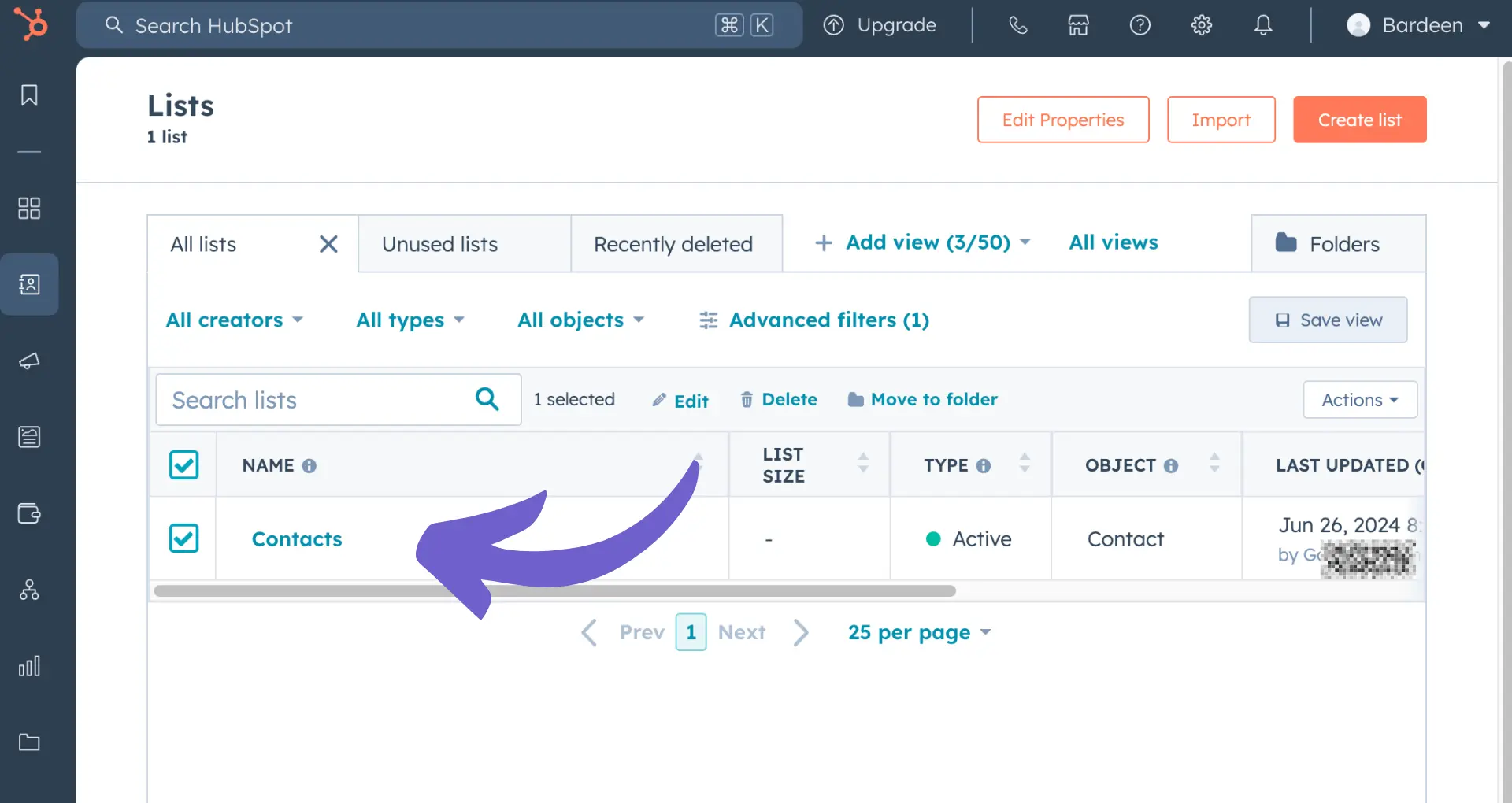
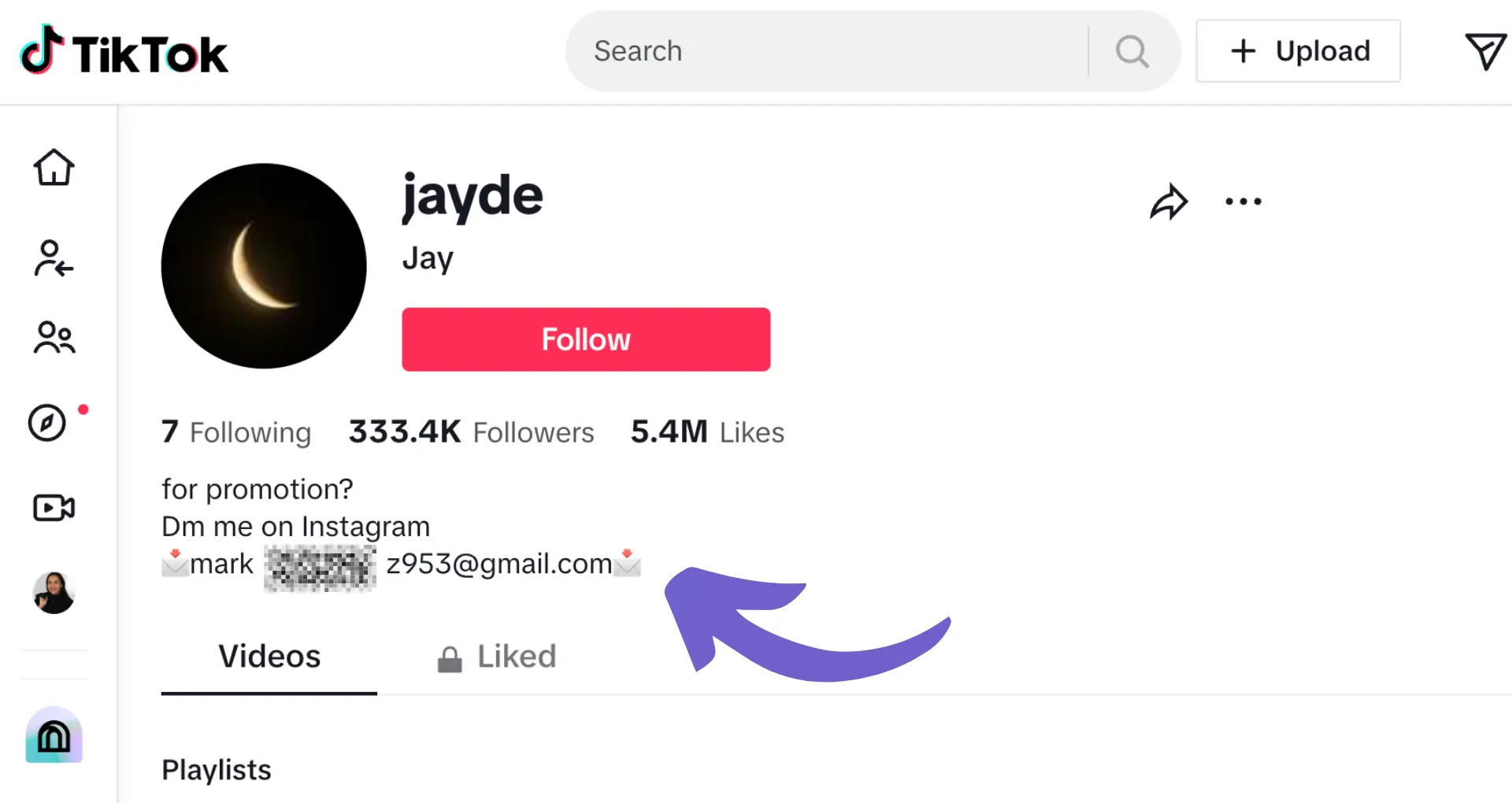







SOC 2 Type II, GDPR and CASA Tier 2 and 3 certified — so you can automate with confidence at any scale.
Bardeen is an automation and workflow platform designed to help GTM teams eliminate manual tasks and streamline processes. It connects and integrates with your favorite tools, enabling you to automate repetitive workflows, manage data across systems, and enhance collaboration.
Bardeen acts as a bridge to enhance and automate workflows. It can reduce your reliance on tools focused on data entry and CRM updating, lead generation and outreach, reporting and analytics, and communication and follow-ups.
Bardeen is ideal for GTM teams across various roles including Sales (SDRs, AEs), Customer Success (CSMs), Revenue Operations, Sales Engineering, and Sales Leadership.
Bardeen integrates broadly with CRMs, communication platforms, lead generation tools, project and task management tools, and customer success tools. These integrations connect workflows and ensure data flows smoothly across systems.
Bardeen supports a wide variety of use cases across different teams, such as:
Sales: Automating lead discovery, enrichment and outreach sequences. Tracking account activity and nurturing target accounts.
Customer Success: Preparing for customer meetings, analyzing engagement metrics, and managing renewals.
Revenue Operations: Monitoring lead status, ensuring data accuracy, and generating detailed activity summaries.
Sales Leadership: Creating competitive analysis reports, monitoring pipeline health, and generating daily/weekly team performance summaries.